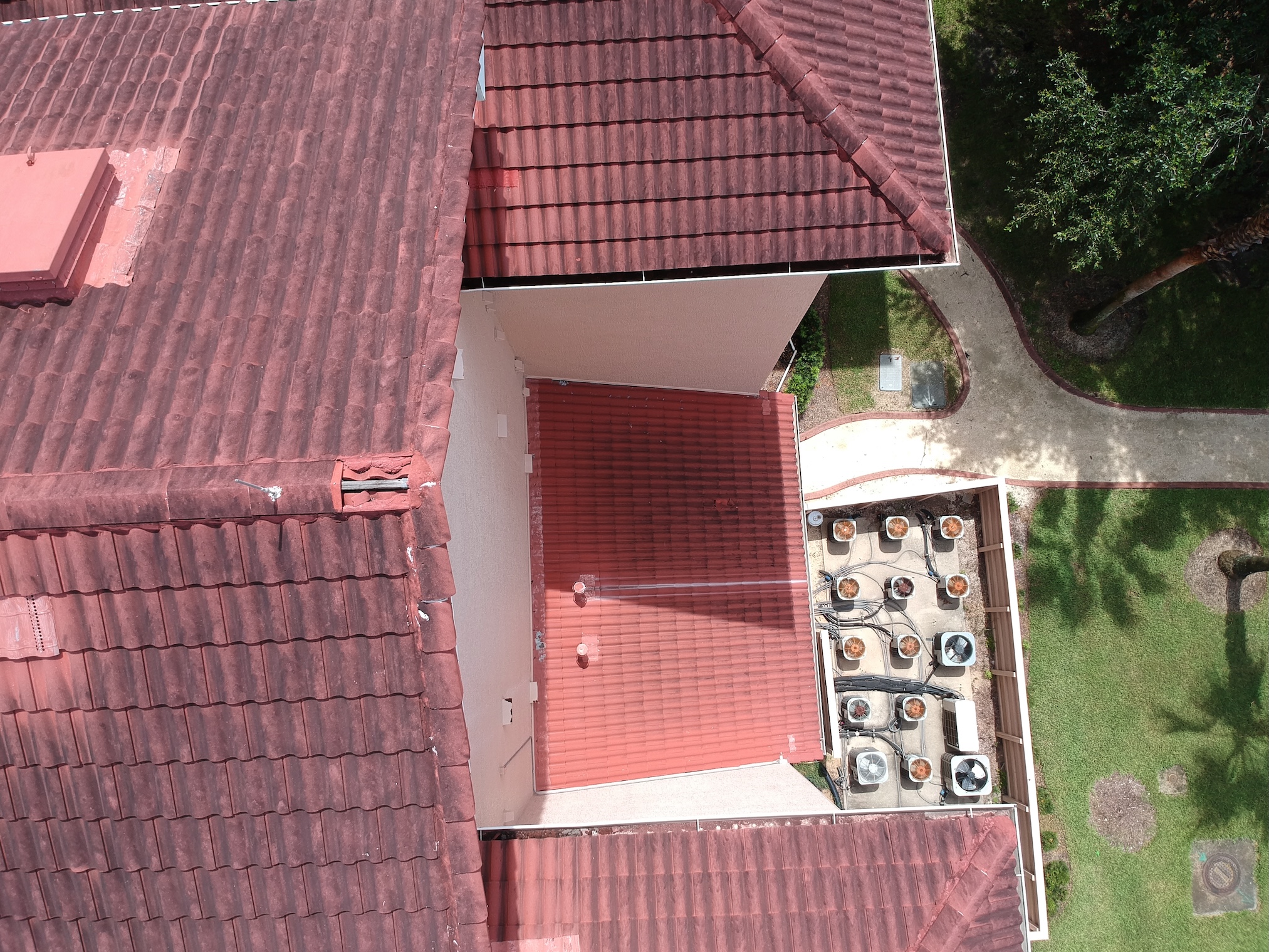🌩️ How to Spot Storm Damage on Your Roof
What to Look for After Wind, Hail, or Hurricanes Hit Your Home
After a Florida storm passes, your first thought is safety. But once the skies clear, your next move should be checking your roof for damage—before leaks, insurance issues, or costly repairs appear.
This guide shows you exactly how to spot storm damage on your roof, with descriptions and photo examples to make it easy (even if you never climb a ladder).
🧠 Why It Matters: Catch It Early, Save Big
Storm damage isn’t always obvious. Even small issues can:
- Lead to interior leaks and mold
- Cause insurance claims to be denied if not filed promptly
- Increase risk of total roof failure in the next storm
That’s why knowing what to look for—and what to do next—is critical.
📷 1. Missing or Displaced Shingles
One of the most common signs after strong winds or hurricanes.
✅ What it looks like:
- Patches where shingles are missing
- Shingles hanging loose or lifted
- Exposed underlayment or decking
📷 2. Shingle Granule Loss
Asphalt shingles have protective granules. Wind, hail, or driving rain can strip them away.
✅ What it looks like:
- Bald spots on shingles
- Granules collecting in gutters or downspouts
💡 Shingles without granules age faster and are more vulnerable to UV damage.
📷 3. Curling, Cracked, or Buckling Shingles
Wind uplift or heat stress can bend shingles out of place.
✅ What it looks like:
- Corners of shingles lifting or curling
- Shingles with hairline cracks or splits
This may look minor, but it can lead to water intrusion under the roof.
📷 4. Hail Damage
Hail doesn’t always leave large dents—but it still compromises your roof’s integrity.
✅ What it looks like:
- Circular impact marks or bruises
- Soft spots or shingle blisters
- Cracked tile or dented metal panels
📷 5. Damaged Flashing or Vents
High winds often pull up the metal flashing that seals roof edges and roof penetrations (like vents and chimneys).
✅ What it looks like:
- Flashing that’s bent, missing, or peeling
- Water stains near vent pipes or skylights
📷 6. Interior Ceiling or Attic Stains
Sometimes the damage isn’t on the roof—it’s inside your home.
✅ What it looks like:
- Brown ceiling spots
- Wet attic insulation
- Dripping or damp drywall
🔍 Can You Spot All the Damage From the Ground?
Not always. Some storm damage can only be seen from:
- The roof itself
- Inside the attic
- A drone or inspection camera
That’s why we always recommend scheduling a free storm damage inspection from a licensed roofing professional.
📞 What to Do if You Spot Storm Damage
- Take clear photos from multiple angles
- Call a licensed roofer for a full inspection
- Avoid DIY repairs—they may void insurance
- Do not file an insurance claim until you know the scope of the damage
✅ Final Thoughts: Spot It Early, Fix It Right
Storms are unavoidable. But fast action = less damage, lower repair bills, and better insurance outcomes.
Don’t wait until leaks show up or your policy denies coverage.
Know the signs. Document everything. Call a professional.
🛠️ Need a Roof Inspection After a Florida Storm?
At TheBestRoofs.com, we offer:
✔️ Free post-storm inspections
✔️ Photo documentation for insurance
✔️ Emergency tarping if needed
✔️ Insurance claim assistance

